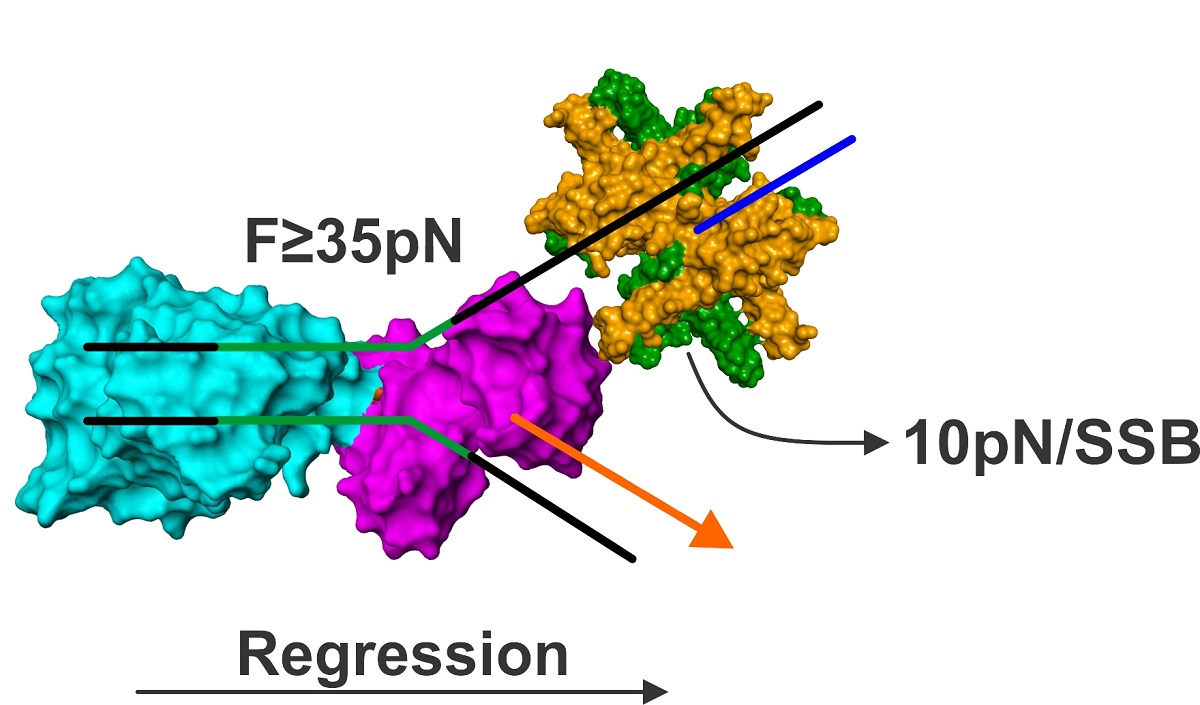In E. coli DNA replication forks stall on average once per cell cycle. When this occurs, replisome components disengage from the DNA, exposing an intact, or nearly intact fork. Consequently, the fork structure must be regressed away from the initial impediment so repair can occur. Regression is catalyzed by the powerful, monomeric DNA helicase, RecG. During this reaction, the enzyme couples unwinding of fork arms to rewinding of duplex DNA resulting in the formation of a Holliday junction. RecG works against large opposing forces enabling it to clear the fork of bound proteins. Following subsequent processing of the extruded junction, the PriA helicase mediates reloading of the replicative helicase DnaB leading to the resumption of DNA replication. The single-strand binding protein (SSB) plays a key role in mediating PriA and RecG functions at forks. It binds to each enzyme via linker/OB-fold interactions and controls fork loading sites in a substrate-dependent manner that involves helicase remodeling. Finally, it is displaced by RecG during fork regression. The intimate and dynamic SSB-helicase interactions play key roles in ensuring fork regression and DNA replication restart.

